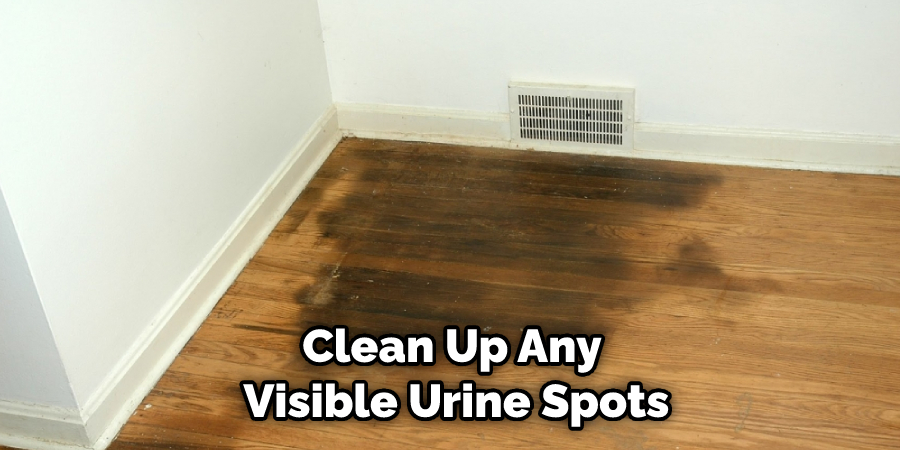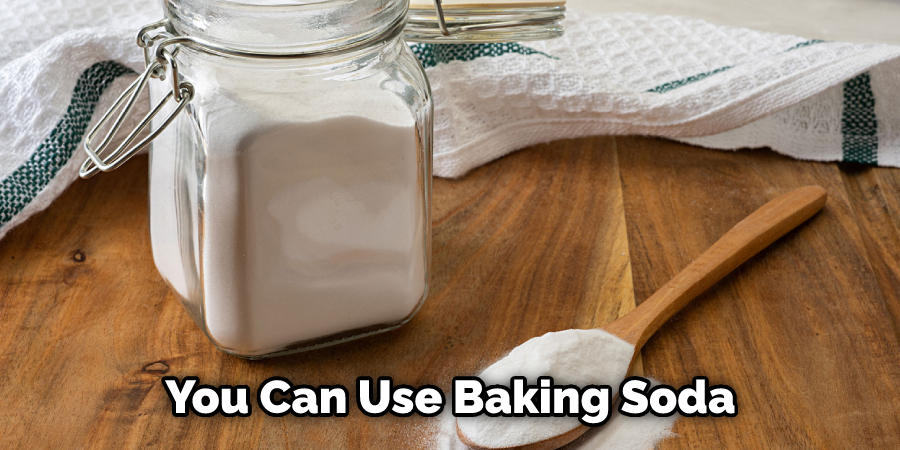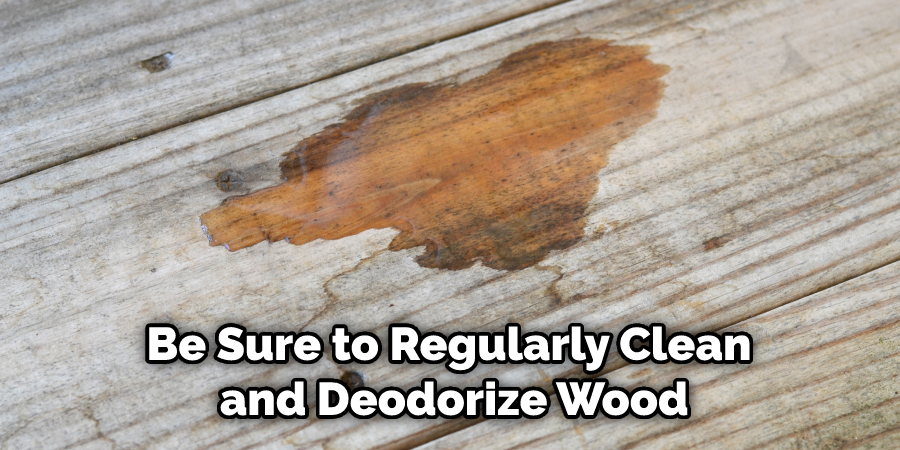Does your nose ever wrinkle up when you pass by a certain area in your home? If so, it could be from the strong smell of rat urine lingering in the air. Have you ever noticed a strange, pungent smell coming from your wooden wall panels or floors? Have you been scratching your head, wondering what it could be? If so, then chances are that the source of this unpleasant odor is actually accidental contamination from rats.

While rat urine has a distinctively potent scent, don’t fret – clean-up doesn’t need to be complicated! In this post, we will look at some simple ways to help remove the rat urine smell from wood and restore its original aroma. Fortunately, there are some strategies you can use to banish that musky scent from every nook and cranny once and for all – here’s how to remove rat urine smell from wood!
Is Removing Rat Urine Smell From Wood Difficult?
Removing rat urine smell from wood does not need to be difficult. Wood is a porous material, and as such, it can absorb odors like those left behind by rats. The key to getting rid of the smell is to deep clean the area and use products that are specifically designed for removing odors. You also need to remember to wear protective gear during the removal process to protect yourself from any potential health risks.
Things to Remember Before Starting
It is important to remember some safety precautions before starting the removal process. Make sure you wear protective gear such as gloves and a face mask while cleaning. Rat urine can contain harmful bacteria that could be hazardous to your health if not handled properly. In addition, make sure the room is well-ventilated by opening windows or doors and using fans to circulate the air.

Required Materials
Before you get started, make sure you have the following materials on hand:
- Disinfectant
- White vinegar
- Baking soda
- Towels or rags
- A vacuum cleaner with a brush attachment
10 Steps on How to Remove Rat Urine Smell From Wood
Step 1: Clean Up Visible Urine Spots
The first step is to clean up any visible urine spots on the wood surface. Use a paper towel or cloth to blot and absorb as much of the liquid as possible. If needed, use a wet-dry vacuum to remove any remaining residue.

Step 2: Disinfect the Area
Once the visible spots have been removed, it is important to disinfect the area. This can be done using a commercial cleaner or a mixture of 1/2 cup of bleach and 1 gallon of water. Use a cloth or rag to apply the solution to the affected area.
Step 3: Soak Up Urine Residue
Next, you will need to soak up any remaining urine residue with a cloth or rag. Make sure that you are using clean and dry towels for this step. Once the area has been thoroughly soaked, use a wet-dry vacuum to suck up any excess moisture.
Step 4: Baking Soda Treatment
Once the area has been cleaned and dried, you can use baking soda to help absorb any remaining odors. Sprinkle a generous amount of baking soda onto the affected area and let it sit for at least 24 hours before vacuuming it up with a wet-dry vacuum.

Step 5: White Vinegar Treatment
Once the baking soda treatment is complete, you can use white vinegar to help remove any remaining odors. Spray a generous amount of white vinegar onto the affected area and let it sit for at least 30 minutes before wiping it off with a damp cloth or rag.
Step 6: Vacuum the Area
Once the white vinegar treatment is complete, use a vacuum cleaner with a brush attachment to thoroughly vacuum the area. This will help remove any remaining odors as well as dirt and dust that may have accumulated on the surface of the wood.
Step 7: Deodorize With Products
Finally, you can use commercial deodorizing products to help remove any remaining odors from the wood surface. These products are specifically designed for removing odors and can be found at most home improvement stores.
Step 8: Air Out the Room
Once all of the cleaning steps have been completed, it is important to let the room air out so that any remaining odors can dissipate. Open windows or doors and use fans to circulate the air in the room.
Step 9: Seal off the Area
Once the area has aired out, you can seal off any cracks or crevices with a silicone-based caulk to prevent future infestations of rats.
Step 10: Dispose of Cleaning Supplies Properly
Finally, it is important to dispose of any used cleaning supplies properly. This includes everything from paper towels and rags to disinfectants and deodorizing products. Be sure to follow the instructions on the label for proper disposal.
By following these steps on how to remove rat urine smell from wood, you can effectively remove rat urine smell from wood surfaces. Remember to wear protective gear, use the right cleaning supplies, and dispose of all used materials properly for best results. With a bit of elbow grease, you can successfully eliminate any lingering odors from your home or office.
8 Common Mistakes to Avoid
When it comes to removing rat urine smell from wood, there are a few common mistakes that you should avoid. These include:
- Not properly cleaning the area before attempting to deodorize the wood. Before any deodorizing process begins, be sure to clean the surface of the wood with a damp cloth or other cleaning product, such as a disinfectant.
- Not using the correct products for deodorizing the wood. When attempting to remove the rat urine smell from wood, it’s important to use the right type of product. Products containing strong chemicals, such as bleach or ammonia, should be avoided as they can damage the wood and are not effective at removing the smell.
- Not using a protective mask when applying products to the wood. Inhaling strong chemical fumes can be hazardous to your health, so always make sure you wear an appropriate breathing mask when applying any cleaning or deodorizing products.
- Not allowing the product enough time to work its magic on the wood. Many deodorizing products need to be left on the wood for a certain amount of time before they can be effective. Be sure to read the instructions carefully and follow them precisely for the best results.
- Not airing out the area after deodorizing it. After you’ve applied a product to remove the rat urine smell from the wood, be sure to open the windows and let fresh air circulate in order to speed up the process of eliminating the smell.
- Not using an enzymatic cleaner when dealing with pet urine. Enzymes are especially effective at breaking down the proteins that cause unpleasant odors and are, therefore, ideal for removing stubborn pet urine smells from wood.
- Not using charcoal to absorb the smell from the wood. Activated charcoal is highly effective at absorbing odors and can be used to remove rat urine smell from wood by placing it in a sealed container near where the odor is strongest.
- Not sealing the wood after deodorizing it. Sealing treated areas with a varnish or wood finish can help protect the wood and also prevent odors from returning.
By avoiding these common mistakes when attempting to remove rat urine smell from wood, you’ll be sure to have success in getting rid of the unpleasant odor for good.
7 Tips to Prevent Rat Urination on Wood

- Keep your wood furniture off the floor. Rats are attracted to anything on the floor, and it’s easy for them to climb up onto furniture that is not elevated. Put items like bed frames, tables, and dressers on risers to make it more difficult for rats to access them.
- Seal any cracks or openings in the walls and floors of your home. Rats can fit through very small spaces, so sealing up entry points can help keep them out.
- Store food items in airtight containers in cupboards and pantries. Keeping open boxes of cereal, bags of flour, or other food items that are attractive to rats makes it easy for them to access and urinate on wood furniture.
- Clean up any spilled food or liquid right away. Rats are attracted to any kind of a mess, so make sure you clean up crumbs or liquid spills quickly.
- Use a deodorizer specifically designed for pet urine odor removal. Products containing enzymes can be used to neutralize the odor and help to prevent rats from returning. Odor-absorbing products like baking soda, charcoal, or coffee grounds can be used as well.
- Use a pet stain remover to clean up rat urine on wood furniture. Products that contain enzymes will help break down the uric acid crystals in the urine and help to remove the smell.
- Utilize a rat repellent. Natural products like cayenne pepper and peppermint oil can be used to repel rats from your home. The repellent should be applied around the perimeter of your home and in any areas where rats are likely to enter.
Following these tips on how to remove rat urine smell from wood can help to prevent rat urination on wood furniture, as well as keep your home smelling fresh. Make sure to use odor-neutralizing products after cleaning up any messes, and invest in a good rat repellent to keep rodents away from your home in the future. With a bit of effort, you can ensure that rat urine smell doesn’t become an issue in your home.
Frequently Asked Questions
How Long Will It Take to Remove the Smell?
It will depend on the type of wood and the concentration of urine present, as well as how long the smell has been sitting. Generally speaking, you can expect to rid your wood surfaces of rat urine smell within a few days with proper cleaning and deodorizing techniques.
The smell may take longer to completely dissipate in porous materials such as wood since the smell can become trapped inside. To speed up the process, you may want to consider using a deodorizing product specifically designed for odor removal.
What is the Best Cleaner for Removing Urine Smell?
The best cleaner for removing the rat urine smell from wood is a solution of warm water and mild dishwashing detergent. Dip a clean rag in the solution and use it to thoroughly scrub the affected area.
Be sure to rinse away any soap residue with another damp cloth afterward. You may also want to consider using enzymatic cleaners specifically designed for pet urine and odor removal. These cleaners contain bacterial enzymes that break down the molecules in the urine, helping to eliminate the smell more effectively.
Can the Urine Smell Return?
It is possible for the urine smell to return if not properly removed or if additional urine deposits occur in the same area. To prevent this from happening, be sure to regularly clean and deodorize wood surfaces that are vulnerable to rat urine, such as near entry points or in basements or attics. If possible, try to limit access to these areas and inspect them on a regular basis for any signs of new deposits.

Conclusion
Removing the smell of rat urine from wood surfaces can be a difficult and tedious task. Taking the time to clean your wooden furniture, fixtures, and baseboards thoroughly is time well spent. Every part of the process on how to remove rat urine smell from wood is important, from cleaning with a damp cloth and soap solution to using an enzymatic cleaner and allowing it plenty of time to work.
Finally, you’ll want to top off the job by completely sealing off your wood surface so that new infiltrations are prevented. While getting rid of rat urine smell from wood might seem like an intense process upfront, once you get down to it, there’s really nothing too complicated about it.
The best part? You won’t have any embarrassing odors lingering in or around your property afterward! So don’t delay – make sure you clean your rat urine smell up quickly for fresher air to breathe.

